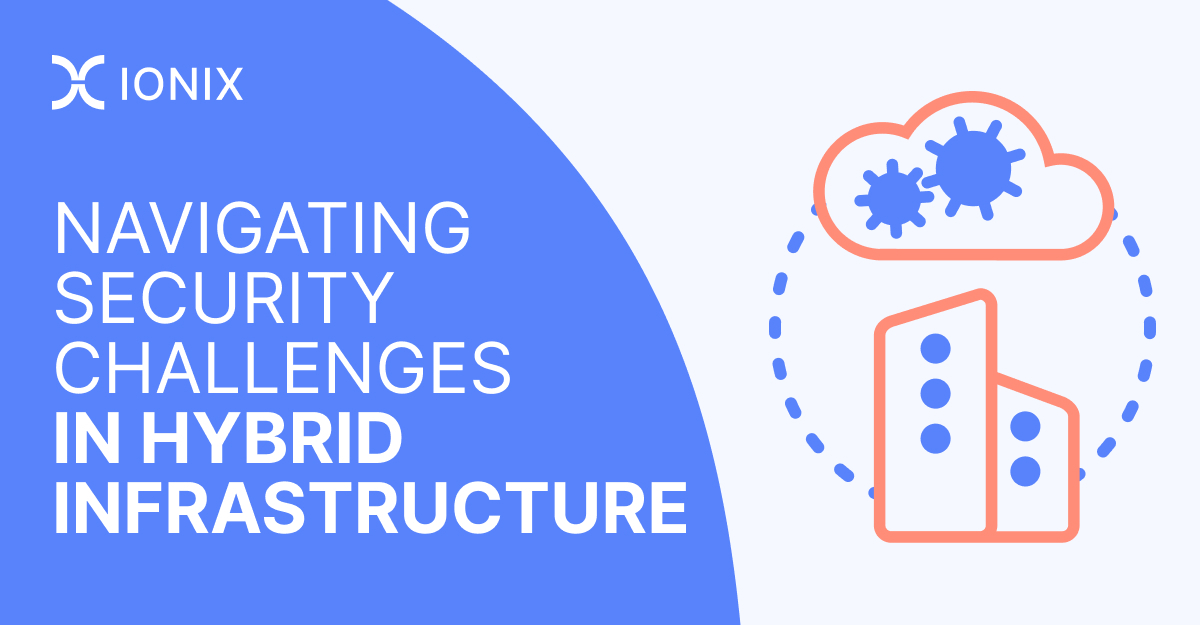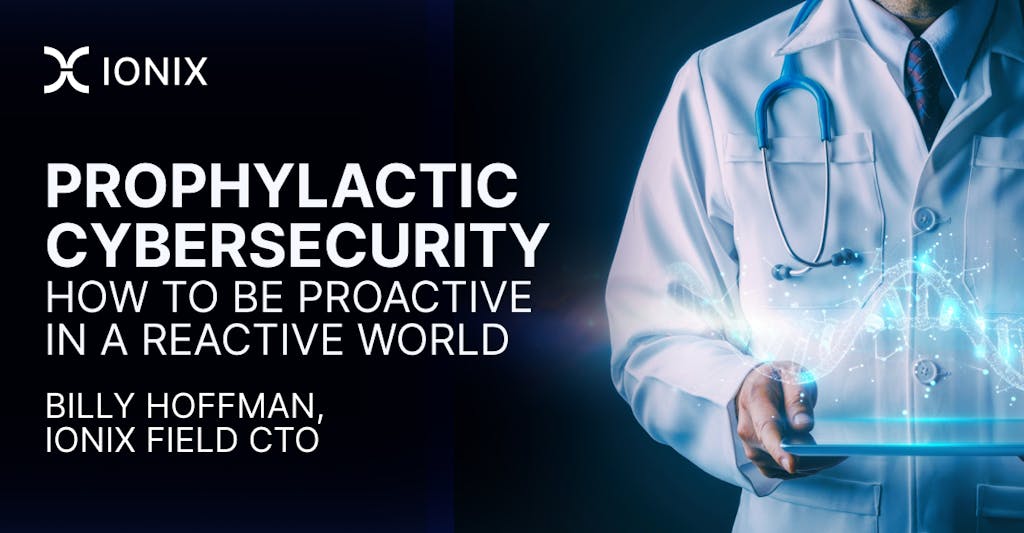Navigating Security Challenges in Hybrid Infrastructure

As organizations increasingly adopt a mix of cloud-based and on-premises systems, they face unique challenges in securing their hybrid infrastructures. Unlike traditional IT setups, where everything is managed within the confines of a single data center, hybrid infrastructures combine the agility of the cloud with the control of on-premises systems. While this blend offers flexibility and scalability, it also introduces security complexity and a broader attack surface. In this article, we will take a closer look at the security challenges of hybrid infrastructures and explore how organizations can implement solutions to safeguard them effectively.
In this article
Understanding Hybrid Infrastructure
A hybrid infrastructure integrates both traditional on-premises systems and cloud-based services. This setup allows organizations to leverage the flexibility and scalability of the cloud without losing control of critical systems on their premises. Statistics reveal that up to 70% of IT leaders believe it is difficult to achieve successful digital transformation without making use of a hybrid model to combine elements of both public and private clouds to optimize performance, cost, and security.
In a traditional IT setup, security teams focused on protecting on-premises systems within a well-defined perimeter. While the hybrid approach offers numerous benefits, it also expands the attack surface, making it more difficult to secure hybrid infrastructures. A hybrid infrastructure encompasses a wide range of assets, including on-premises servers, cloud instances, virtual machines, containers, and remote endpoints. Each of these components introduces a new risk of threat exposure, as each component has its distinct vulnerabilities and requires individual security measures.
Security Challenges in Hybrid Infrastructures
Managing security in a hybrid infrastructure involves addressing a range of challenges that stem from the integration of diverse systems. Here are some of the most significant hybrid infrastructure security challenges organizations face:
- Hybrid Infrastructures and Expanded Attack Surface
Hybrid infrastructures expand the attack surface, making them attractive targets for cybercriminals. With data and applications spread across cloud services and on-premises systems, the number of entry points for potential attacks multiplies. For instance, misconfigured cloud services or unpatched on-premises systems can be exploited, causing attacks on hybrid infrastructure that lead to data breaches or service disruptions.
- Visibility and Monitoring Difficulties
Ensuring full visibility across a hybrid infrastructure can be challenging. On-premises systems are often easier to monitor and secure directly, while cloud infrastructures can be opaque due to third-party management and multi-tenant architectures. Organizations must adopt sophisticated monitoring tools to maintain comprehensive oversight across all components of their hybrid infrastructure.
- Compliance and Governance Issues
Managing compliance in a hybrid infrastructure is complex. Organizations must navigate varying regulatory requirements for data stored on-premises and in the cloud. For instance, data residency laws might require certain data to remain within specific geographic boundaries, complicating the use of global cloud services. Ensuring consistent compliance across both infrastructures is critical to avoid legal and financial repercussions.
- Identity and Access Management (IAM) Complexity
Hybrid infrastructures require robust IAM solutions to manage user access across diverse systems. Coordinating IAM policies between on-premises and cloud services is challenging, particularly as each infrastructure might have different security protocols and access requirements. This complexity can lead to security gaps if not managed carefully.
- Increased Risk of Insider Threats
The combination of on-premises and cloud systems can make it harder to identify and respond to insider threats. Employees with access to both infrastructures may inadvertently or maliciously compromise security, leading to data leaks or system breaches.
- Web / Digital Supply Chain Vulnerabilities
The hybrid approach often involves multiple vendors, each contributing to different parts of the infrastructure. This interconnected supply chain extends the potential risk beyond employees with direct access to the system, as vulnerabilities in one component can compromise others.
- Shadow IT and Misconfigurations
The rise of shadow IT, where employees use unauthorized applications and services, is a significant risk in hybrid infrastructures. These unvetted tools can introduce vulnerabilities and complicate the organization’s security posture. Additionally, misconfigurations in cloud services are a common issue, as they can leave systems exposed to attacks.
Solutions for Securing Hybrid Infrastructures
Maintaining hybrid infrastructure cybersecurity demands a multifaceted strategy that accounts for both the infrastructure’s on-premises and cloud components. Here, we explore several key strategies that can help organizations ensure that both sides of their infrastructure remain secure at all times:
- Comprehensive Security Policies
Developing and enforcing comprehensive security policies that span both on-premises and cloud infrastructures is crucial. These policies should provide a clear protocol that covers access controls, data encryption, incident response, and compliance requirements. Regular audits and updates to these policies ensure they remain effective against evolving threats.
- Unified Visibility and Monitoring
Effective security in hybrid infrastructures requires unified visibility across both on-premises and cloud components. Advanced monitoring solutions can integrate data from various sources to provide a cohesive view of the infrastructure. This integration enables organizations to locate and mitigate threats in real time, regardless of where they originate.
- Robust Compliance and Governance Frameworks
Maintaining compliance in a hybrid infrastructure necessitates strong governance frameworks that align with industry standards like DORA, ISO 27001, and NIST.
Periodic audits and ongoing monitoring are essential to ensure that both on-premises and cloud components meet regulatory requirements and follow best practices.
- Enhanced IAM Solutions
Organizations must implement IAM solutions that can operate seamlessly across both on-premises and cloud infrastructures. Multi-factor authentication (MFA), role-based access controls (RBAC), and the principle of least privilege are crucial elements of a robust IAM strategy. These protocols can help ensure that only authorized users can access critical systems or data.
- Employee Training and Awareness
Educating employees about the unique security risks associated with hybrid infrastructures is vital. Regular training sessions and awareness initiatives can help employees recognize and avoid common threats like phishing and social engineering attacks.
- Web / Digital Supply Chain Security Measures
Given the interconnected nature of hybrid infrastructures, securing assets in your supply chain is imperative. Continuous monitoring and assessment of the digital supply chain can help identify potential risks before they become significant threats.
- Vulnerability Assessments
Regular vulnerability assessments play a critical role in identifying and addressing weaknesses within hybrid infrastructures. These assessments involve systematic evaluations of both on-premises and cloud-based components to uncover vulnerabilities that malicious actors could exploit. By conducting these assessments regularly, organizations can stay proactive in their approach to cybersecurity, ensuring that potential threats are identified early and addressed promptly.
- Comprehensive Attack Surface Discovery
To reduce hybrid infrastructure threat exposure, organizations must manage their broad attack surface. To do so, organizations require tools that provide a complete view of all assets and their potential vulnerabilities. These tools are essential for mapping the entire infrastructure and identifying weak points that attackers could exploit. By thoroughly understanding their infrastructure, organizations can pinpoint areas of risk, monitor for potential threats, and implement targeted security measures. This comprehensive approach not only enhances visibility but also enables proactive risk management, ensuring that all components of the hybrid infrastructure are adequately protected.
How IONIX Can Help Secure Your Hybrid Infrastructure
IONIX offers a comprehensive solution tailored to meet the unique security challenges of hybrid infrastructures by leveraging unique features such as Attack Surface Cloud Cross-View (CCV) feature, a pivotal extension of its Attack Surface Management (ASM) platform. This advancement provides organizations with a comprehensive view of their entire attack surface across both cloud and on-premises infrastructure.
Unlike traditional cloud security tools that operate with limited internal views, IONIX’s CCV integrates internal cloud asset views with external threat exposure management, mapping all application dependencies and assessing asset importance and exploitability. This capability bridges critical security gaps, including shadow IT, unintentionally exposed assets, and risks within digital supply chains. By offering a unified approach to security management, IONIX ensures that every asset, regardless of its location, is secure and protected against potential cyber threats.
Additionally, IONIX employs a rigorous vulnerability assessment methodology that spans both on-premises and cloud infrastructures. This methodology ensures thorough identification and evaluation of vulnerabilities, enabling organizations to manage risks effectively and implement targeted remediation strategies. By focusing on critical risks, IONIX enables efficient resource allocation and proactive threat mitigation.
Beyond assessment, IONIX facilitates seamless risk remediation and exposure validation. These features support organizations in promptly addressing identified vulnerabilities and validating the effectiveness of mitigation measures. This continuous validation helps maintain a strong security posture over time.
Successfully Navigating The Challenges of Securing Hybrid Infrastructure
Managing hybrid infrastructure security is a complex but essential task. The combination of on-premises systems and cloud services offers numerous benefits but also introduces unique challenges. By understanding these challenges and implementing comprehensive security solutions, organizations can protect their critical assets and data from evolving cyber threats.
IONIX provides the tools and expertise needed to secure hybrid infrastructures effectively. With a solution that covers attack surface discovery, risk prioritization, and exposure validation, IONIX empowers organizations to navigate the complexities of hybrid infrastructure security confidently.
For organizations operating in a hybrid infrastructure, staying ahead of threats requires a proactive approach and the right partners. IONIX stands ready to help you safeguard your infrastructure and enhance your cybersecurity posture, ensuring that your hybrid infrastructure remains resilient against the ever-evolving landscape of cyber threats.






